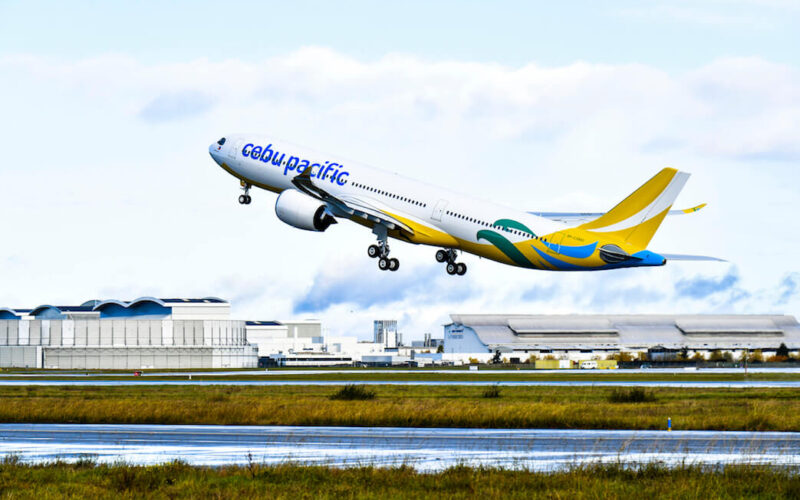Philippine low-cost airline Cebu Pacific received its first Airbus A330neo on November 28,2021 as it begins its widebody fleet modernization programme.
The aircraft features 459 lightweight Recaro seats, which have been ergonomically designed, and offers versatility for a wide range of routes from shorter regional services to medium and long-haul operations. The Airbus A330neo will be used to operate trunk routes within the Philippines and the rest of Asia, as well as on longer range services to Australia and the Middle East.
The A330neo brings a step change in efficiency, consuming 25% less fuel than previous generation aircraft and a similar reduction in CO2 emissions. The efficiency of the A330neo also ensures compliance with current and future sustainability requirements in terms of noise and emissions.
“Cebu Pacific’s first A330neo brings us closer to our target of having an all-Neo fleet by 2027, and shows our commitment to making air travel accessible, while ensuring environmental and social sustainability,” Cebu Pacific chief strategy officer Alex Reyes said in a statement.
Reyes added: “We believe that growth and sustainability are not mutually exclusive and should in fact be inclusive if we want to work towards the greater good. This is why we will always choose the greener options – increased aircraft efficiency, reduced noise and carbon emissions, to ensure that lower fares will be available for everyJuan.”
Can you identify what NEO plane this is? Watch out for a NEO beauty with a Rolls-Royce Trent 7000 engine for #planespotting and #MoreSmilesAhead! #CEBNeoWayToFly pic.twitter.com/LiMXZtgqUP
— Cebu Pacific Air (@CebuPacificAir) November 26, 2021
In total, Cebu Pacific has ordered 16 A330neo, and also has 16 A320neo and 22 A321neo still to be delivered. The low-cost carrier currently operates 50 Airbus aircraft, comprising 43 A320 family and 7 A330ceo.
“We thank and applaud Cebu Pacific for selecting our latest-technology A330neo as part of its fleet modernisation drive to fly the greenest aircraft for a sustainable future. The A330neo is the first aircraft in the world already certified to comply with ICAO’s CO2 emissions standards beyond 2028. The airline will benefit from the aircraft’s step-change in performance and economics, while maintaining passenger comfort and lowest operating costs,” said Airbus Asia-Pacific President Anand Stanley in a press statement.
The aircraft is powered by Rolls-Royce’s latest-generation Trent 7000 engines and features a new composite wing with increased span for enhanced aerodynamics.
The A330 remains the most popular widebody family aircraft for Airbus, with an order book of more than 1,800 aircraft at the end of October 2021.

